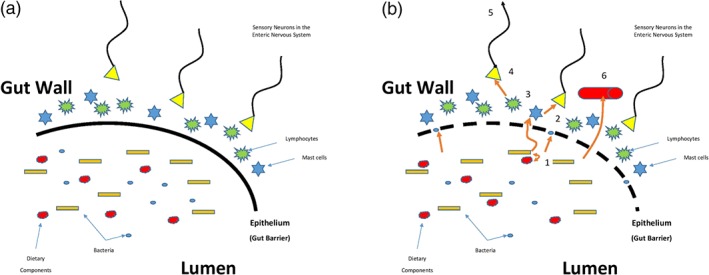Figure 2.

Interactions between the microbiota, dietary components and host. (a) Health. Bacteria, bacterial products or metabolites generated in the lumen by interactions between digesta and the microbiome underpin a symbiotic relationship with the host. Metabolic products generated by microbiota‐food interactions are available to the host. The host immune response to commensal species does not generate an inflammatory but rather a regulatory T‐cell response with the generation of anti‐inflammatory cytokines. Gut barrier integrity is retained. (b) Disease. When this relationship breaks down bacteria, bacterial products or metabolites gain access to the submucosal compartment via a more permeable epithelium or via transcytosis (1) where they activate mast cells and engage with lymphocytes leading to the release of proteases and cytokines/chemokines (2,3) respectively. As well as inducing an inflammatory response, these molecules also activate sensory afferents leading to local reflex responses (4) and/or central transmission (5). Simultaneously, bacterial products and inflammatory mediators may gain access to the portal and systemic circulations via the submucosal vasculature (6)
